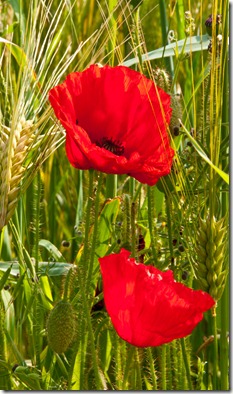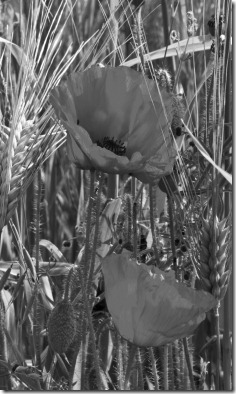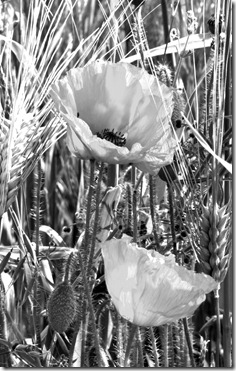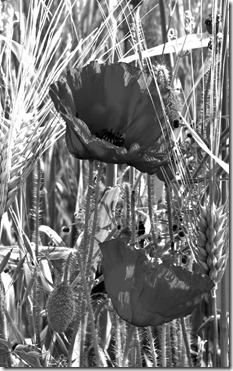Using an image of poppies in a corn field, for their complementary colours, adjustments to the channel mixer (selected for monochrome) were made:
Original Image Grayscale Image
The grayscale image was obtained by selecting the grayscale mode, rather than the channel mixer, to attain a reference image for the next two adjustments.
Red slider 100% Green Slider 100%
With the red slider at 100%, the poppy petals became almost white, as expected. Other elements in the image also became much lighter. Obviously the corn and the poppy stem hairs have an element of red in them, as they became lighter. Some of the greener parts (long stems and poppy seed heads) became darker.
With the Green slider at 100%, the green parts became lighter, as did other areas in the image – the corn obviously has some green elements, but surprisingly much of what was perceived to be green didn’t get as light as I’d expected. I assume these areas must have an element of yellow (which would be affected by the blue slider). What does surprise me is the darkness in the red poppy petals. The flowers have become more prominent in the image, due to their contrast with the lighter foliage.
It’s worth noting that the majority of foliage has become very light in both situations, to the point of clipping, so these adjustments require some care when making them. Personally I prefer to use the B&W adjustment layer to create monochrome images – it’s easy to see the effect on the final image and is much more controllable.




No comments:
Post a Comment